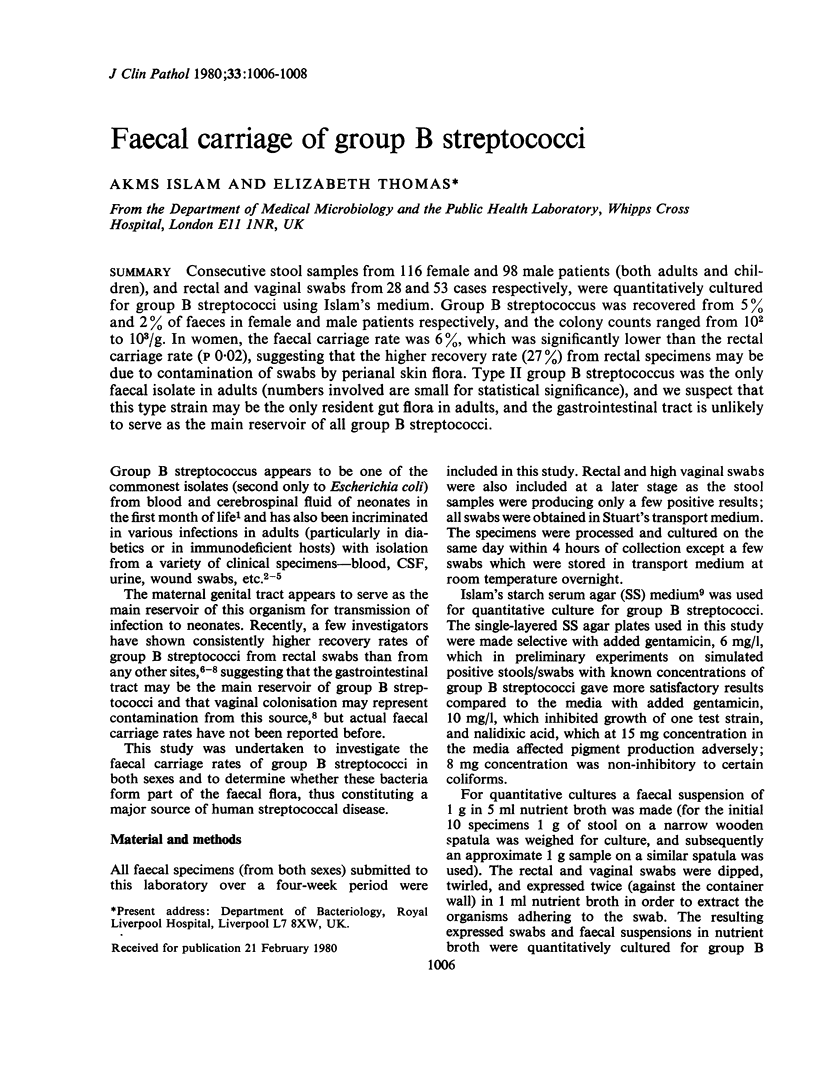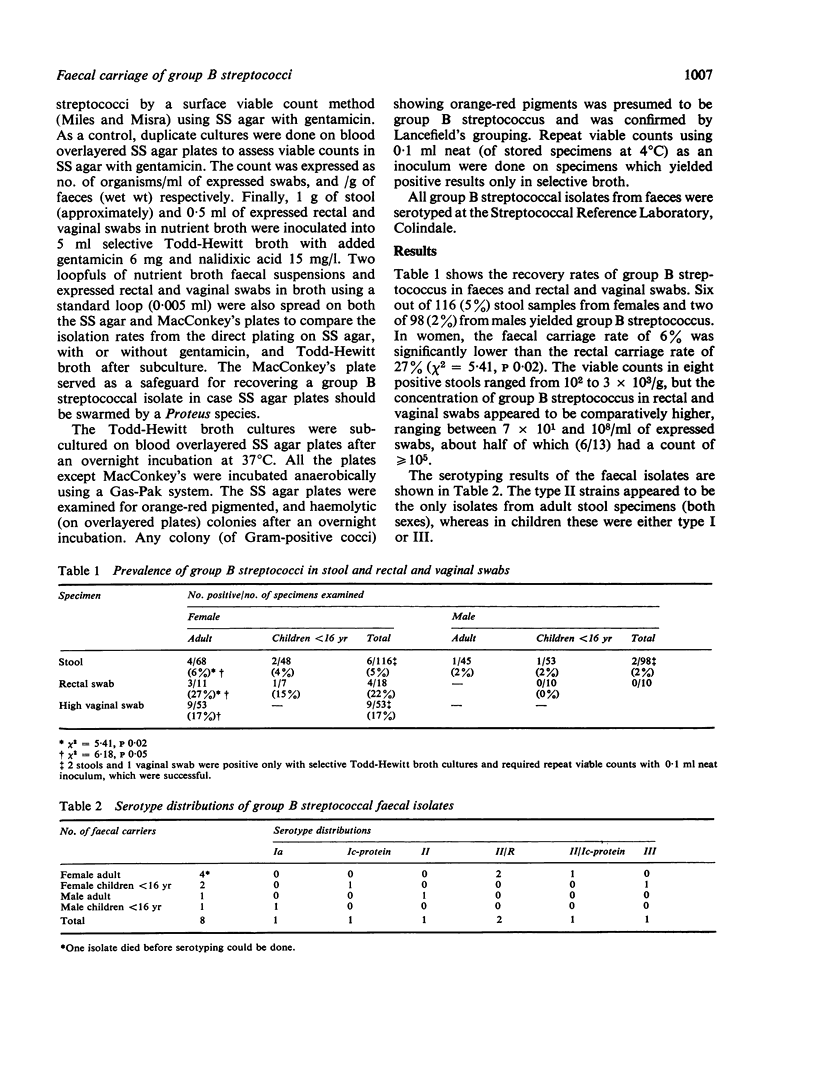Abstract
Consecutive stool samples from 116 female and 98 male patients (both adults and children), and rectal and vaginal swabs from 28 and 53 cases respectively, were quantitatively cultured for group B streptococci using Islam's medium. Group B streptococcus was recovered from 5% and 2% of faeces in female and male patients respectively, and the colony counts ranged from 10(2) to 10(3)/g. In women, the faecal carriage rate was 6%, which was significantly lower than the rectal carriage rate (p 0.02), suggesting that the higher recovery rate (27%) from rectal specimens may be due to contamination of swabs by perianal skin flora. Type II group B streptococcus was the only faecal isolate in adults (numbers involved are small for statistical significance), and we suspect that this type strain may be the only resident gut flora in adults, and the gastrointestinal tract is unlikely to serve as the main reservoir of all group B streptococci.
Full text
PDF


Selected References
These references are in PubMed. This may not be the complete list of references from this article.
- Badri M. S., Zawaneh S., Cruz A. C., Mantilla G., Baer H., Spellacy W. N., Ayoub E. M. Rectal colonization with group B streptococcus: relation to vaginal colonization of pregnant women. J Infect Dis. 1977 Feb;135(2):308–312. doi: 10.1093/infdis/135.2.308. [DOI] [PubMed] [Google Scholar]
- EICKHOFF T. C., KLEIN J. O., DALY A. K., INGALL D., FINLAND M. NEONATAL SEPSIS AND OTHER INFECTIONS DUE TO GROUP B BETA-HEMOLYTIC STREPTOCOCCI. N Engl J Med. 1964 Dec 10;271:1221–1228. doi: 10.1056/NEJM196412102712401. [DOI] [PubMed] [Google Scholar]
- Ferrieri P., Blair L. L. Pharyngeal carriage of group B streptococci: detection by three methods. J Clin Microbiol. 1977 Aug;6(2):136–139. doi: 10.1128/jcm.6.2.136-139.1977. [DOI] [PMC free article] [PubMed] [Google Scholar]
- Franciosi R. A., Knostman J. D., Zimmerman R. A. Group B streptococcal neonatal and infant infections. J Pediatr. 1973 Apr;82(4):707–718. doi: 10.1016/s0022-3476(73)80604-3. [DOI] [PubMed] [Google Scholar]
- Islam A. K. Rapid recognition of group-B Streptococci. Lancet. 1977 Jan 29;1(8005):256–257. doi: 10.1016/s0140-6736(77)91055-8. [DOI] [PubMed] [Google Scholar]
- Manuel F. R., MacDonald S. W., Embil J. A. Prevalence of group B beta-hemolytic streptococci in the male urethra. Scand J Infect Dis. 1980;12(1):33–35. doi: 10.3109/inf.1980.12.issue-1.06. [DOI] [PubMed] [Google Scholar]
- Mhalu F. S. Infection with Streptococcus agalactiae in a London hospital. J Clin Pathol. 1976 Apr;29(4):309–312. doi: 10.1136/jcp.29.4.309. [DOI] [PMC free article] [PubMed] [Google Scholar]
- Mitchell R. G., Guillebaud J., Day D. G. Group B streptococci in women fitted with intrauterine devices. J Clin Pathol. 1977 Nov;30(11):1021–1024. doi: 10.1136/jcp.30.11.1021. [DOI] [PMC free article] [PubMed] [Google Scholar]
- Parker M. T., Ball L. C. Streptococci and aerococci associated with systemic infection in man. J Med Microbiol. 1976 Aug;9(3):275–302. doi: 10.1099/00222615-9-3-275. [DOI] [PubMed] [Google Scholar]


